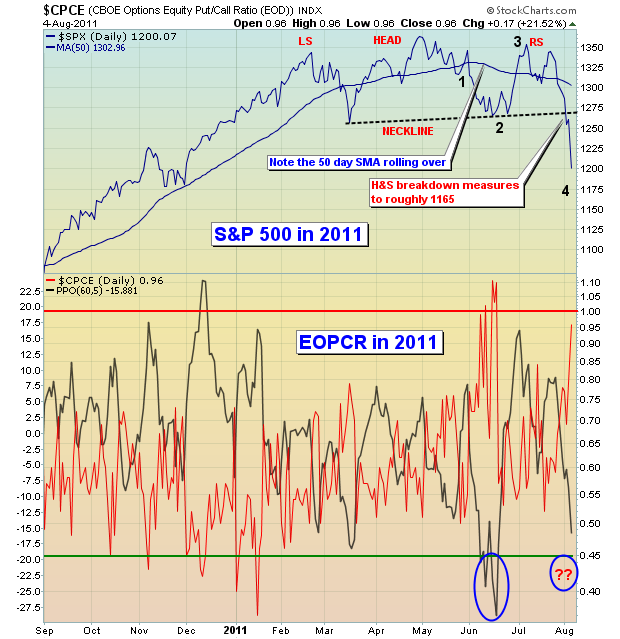If you recall, stocks were mired in an ugly bear market from 2000 through 2002. At the end of that bear market, however, the S&P 500 staged a huge advance, running specifically from 789 in March of 2003 to 1163 by March 2004. After that big climb, there were several scary points during the ensuing decline. Take a look at what transpired back then:

The key points were as follows:
(1) In March 2004, a swift selloff took the S&P 500 below its 50 day SMA with a lot of force and the 50 day SMA rolled over.
(2) A reversal was seen 2-3 weeks later in late March as relative pessimism reaches an extreme level (-20%+).
(3) The next rally carried the S&P 500 above its 50 day SMA, but a break above recent highs was never achieved.
(4) The next low occurred about six weeks later, until once again relative pessimism marked a short-term bottom.
(5) Another bounce followed, again printing a lower high.
(6) One more selloff followed until sentiment again approached what I consider to be extreme pessimism.
The pattern in 2011 is a work-in-progress, but it seems to be following almost an identical path. Have a look:

Check out the key points:
(1) In late May, a swift selloff took the S&P 500 below its 50 day SMA with a lot of force and the 50 day SMA rolled over.
(2) A reversal was seen 2-3 weeks later in mid-June as relative pessimism reaches an extreme level (-20%+)
(3) The next rally carried the S&P 500 above its 50 day SMA, but a break above recent highs was never achieved.
(4) The next low is occurring now, about six weeks later, as we await relative pessimism to likely mark another bottom.
(5) and (6) have not occurred yet, but are likely.
In addition to similar paths in 2011 vs. 2004, market participants today must also deal with a HEAVY volume breakdown of a head & shoulders pattern. Bounces will be likely, but strength can be shorted in the near-term, especially if the neckline of the head & shoulder is approached. Measurements vary by index, but I'd look for 1150-1175 on the S&P 500, at a minimum.
Declines always seem to take place so much quicker than advances, and there's a reason for it. When the selling volume becomes too large, market makers temporarily cease their role as liquidity providers, leaving fewer buyers. In fact, as traders, many of these market making firms join in on the sell side, swamping buyers and creating an avalanche effect.
Later this month, I'll be discussing the effect of market makers and the impact they have on traders like you and me. Without a thorough understanding of the forces that take place in the stock market, successful trading is likely to remain a mystery. If you're interested in gaining a better understanding of market makers, you can CLICK HERE to register for this event.
Happy trading!
